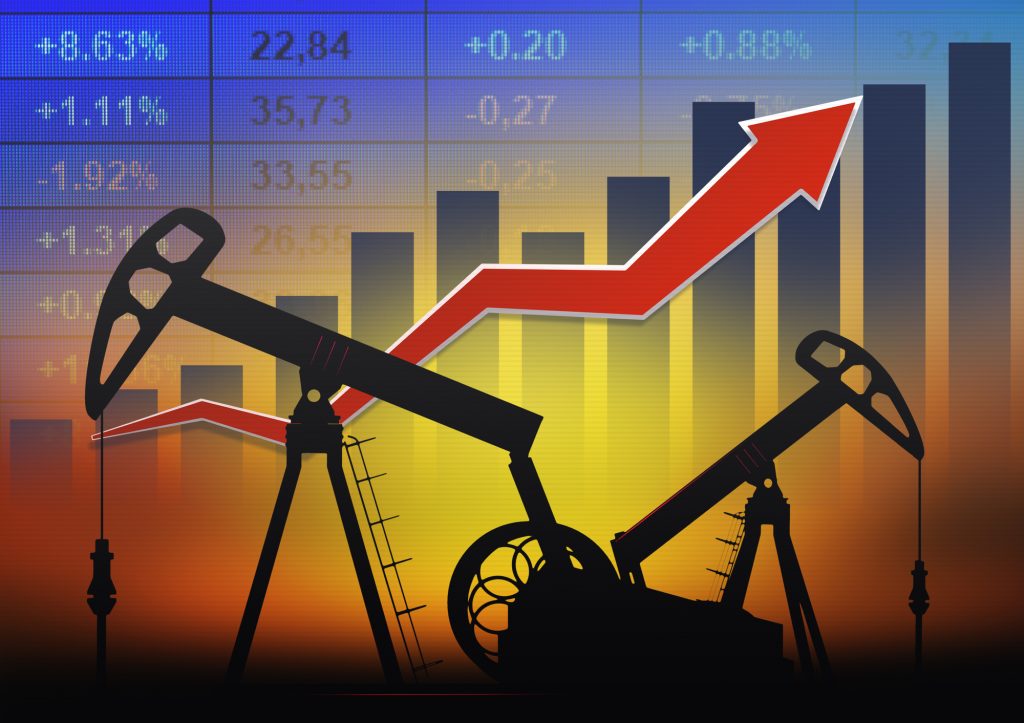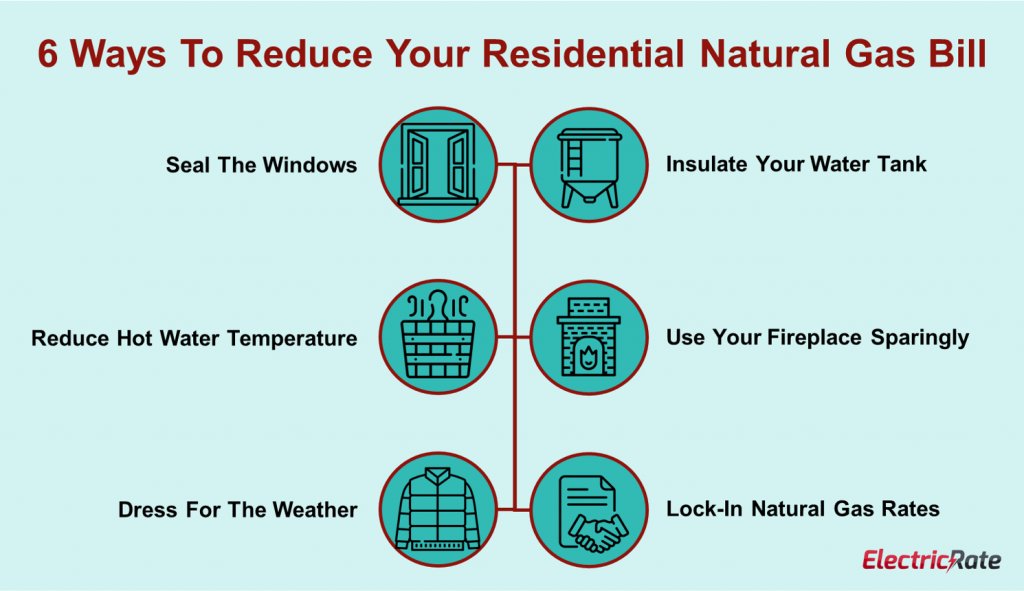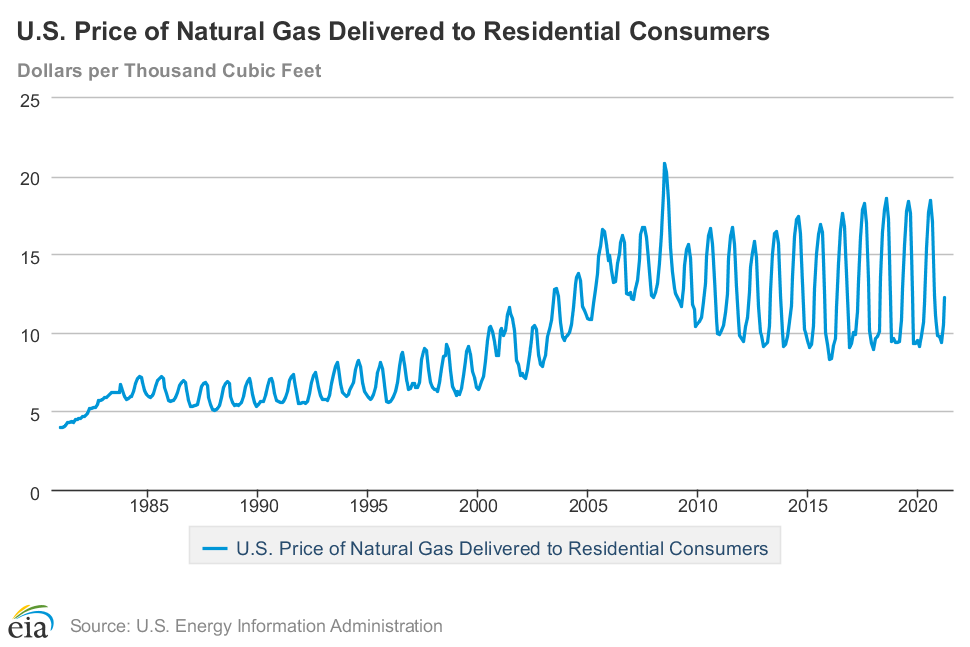How do you Calculate Your Monthly Natural Gas Bill?

Most households love natural gas – it’s cheaper than electricity, more environment-friendly, and produced right here in the United States. Natural gas already dominates our country as the top energy source for powering our daily lives.
However, when it comes to the cost of natural gas, things start getting a bit confusing. You will come across terms like cost per therm, cost per BTU, and CCF and you might find it hard to figure out what you are paying for. Let’s analyze it together.
Natural Gas Cost per Therm
There are three different ways to talk about natural gas:
- HEAT – The amount of heat you need to increase the temperature of 1 pound of water 1 degree Fahrenheit is 1 Btu or British thermal unit
- VOLUME – The volume of natural gas is measured in Ccf, short for one hundred cubic feet (C is the Roman sign for 100)
- CONTENT – You get the content of natural gas per physical unit by combining the above values = Btu per cubic foot
In the United States, natural gas can be priced in units of dollars per therm, dollars per Btu, or dollars per cubic foot. You need to know the heat content of natural gas to convert these prices from one measure to another.
Here is an example: The U.S. average heat content of natural gas was about 1,037 Btu per cubic foot in 2020. One therm is equal to 100,000 Btu, so 100 cubic feet (Ccf) of natural gas equals 103,700 Btu or 1.037 therms.
Factors Affecting Natural Gas Prices
The cost per therm varies significantly both by season and by location. Since natural gas is a non-renewable commodity, there is only a limited supply of it on Earth which means that natural gas rates are affected by available annual production, transport, and geopolitical issues.
World Market
The main predeterminer of natural gas price is the supply and demand in the world market. Gas is normally produced as biogas or is extracted from deep underground. The gas is purified (if needed) and stored in huge onshore containers and off short, or LNG or gas carriers and is sold worldwide. The USA is one of the countries lucky enough to have their own natural gas supply, but this country still buys a lot of it on the world market.
Transportation
Unlike electricity, natural gas usually has to travel long distances before it reaches your household. That’s why it is more expensive in Hawaii than in Idaho, Louisiana, and North Dakota.
Similarly to other commodities, supply and demand play a crucial role. When the demand for gas is high (in the winter and summer for heating and cooling), the average cost per therm is higher.
Regulations & Taxes
Apart from the aforementioned costs included in the price of natural gas, there will be other charges on your bill. These include local, city, and state taxes and a natural gas sales tax paid directly to the state.
Your state will likely have an energy efficiency program for natural gas, the cost of which will be passed on to you, the customer in the form of an energy-efficiency charge from your utility company.
Even after adding up all these price tags, the good news is that natural gas rates are consistently two to three times lower than average electric prices. What exactly is that actual price in the U.S.? Let’s find out.
Seasons
In 2020, natural gas was the single largest fuel source for electricity production in the USA, with around 40% participation in total electricity produced. Normally, as the demand for electricity rises in the winter and the summer, so do the prices of natural gas. In the winter, gas is used to supply heat energy, while in the summertime, it is used to produce electricity which then cools your home.
Seasons can also influence the price of natural gas in the sense that extreme weather events can cause gas pipelines to freeze since a part of the natural gas is water vapor. This water vapor can condense on the walls of the pipes and block them. This can reduce natural gas availability regionally and cause an increase in the price of natural gas.
Locations
Your location can also play a significant role in the price of natural gas you pay per thousand cubic feet. Namely, more remote areas pay a slightly higher price of gas since the transportation costs are higher. Likewise, the gas price is also higher in overseas areas, such as Hawaii, since the transportation is costly and easily disrupted.
In such remote areas, huge LNG or gas tanks are built to meet the peak energy and gas demand. These are very costly and take a lot of safety measures to function properly, which is another contributor to the gas price. Luckily, the huge containers are usually filled when the demand for gas is at its lowest, to ensure that the gas price stays stable over a longer period of time.
Average Cost for Residential Customers
According to the Energy Information Administration (EIA), the average U.S. price for natural gas to residential customers in April 2021 was $12.21 per thousand cubic feet. If you recall our previous calculations, that’s $1.22 per ccf (hundred cubic feet). At the heat content of 1,037 Btu per cubic foot, the natural gas therm price of $1.18.
Still with us? If you are still a bit lost, here is a little cheat sheet:
$ per Ccf divided by 1.037 equals $ per therm
Are the average U.S. natural gas prices going up or down? Since the 1990s, natural gas rates have fluctuated greatly (with a slight upward trend) due to weather, infrastructure, and other supply problems as you can see from the graph below. The notable peak in the price was in 2005 thanks to unusually active and destructive hurricane season.
States with the Cheapest Natural Gas
Some U.S. states have won the economic lottery and have access to cheap residential and business natural gas. Do you live in one of them? Let’s look at the top 10 states for the cheapest natural gas:
| State | Average Residential Price (in dollars/thousand cubic feet) |
|---|---|
| Alaska | $4.68 |
| Utah | $7.60 |
| Washington | $7.65 |
| Colorado | $7.74 |
| Wyoming | $7.77 |
| Michigan | $7.80 |
| North Dakota | $8.10 |
| Nebraska | $8.19 |
| New Mexico | $8.54 |
| Idaho | $8.57 |
However, commercial customers need natural gas to keep their offices cool in summer and comfortably toasty in winter. Which 10 states have the lowest average commercial natural gas rates?
| State | Average Commercial Price (in dollars/thousand cubic feet) | ||
|---|---|---|---|
| Alaska | $4.42 | ||
| Utah | $6.40 | ||
| Wyoming | $6.58 | ||
| Washington | $6.78 | ||
| Colorado | $6.98 | ||
| Nebraska | $7.33 | ||
| New Mexico | $7.44 | ||
| North Dakota | $7.49 | ||
| Michigan | $7.52 | ||
| South Dakota | $7.66 |
Data from the Public Policy Institue of New York State
Methods to Reduce Your Natural Gas Consumption
Over 47% of American homes use natural gas as their primary heat source. If you are among them, you are already using one of the most efficient methods of heating your home. However, that’s not much help when the below-zero temperatures hit and the natural gas bill shoots up.
Let’s look at some tips to lower your utility bill and save money on costs:

Sealing the Windows
Heat loss accounts for 10% to 25% of your total monthly bill, so next time you are doing a DIY home audit, check your window seals. You can buy commercially available clear plastic film for a cheap way to stop air leaks.
Decrease Your Hot Water Temperature
If your water heater thermostat is set at 140ºF by default, you might be burning through $61 annually and face a safety hazard—scalding. Reducing your water heater temperature to 120ºF will not only save you money but will slow mineral buildup and corrosion in your water heater and pipes.
Dress for the Weather
Feel cold? Put on an extra layer before you reach for the thermostat. This might not only be good for your wallet, but your health too as keeping the central heating on all day can dry your skin and cause eye irritation.
Provide Insulation to your Water Tank
When on standby, your uninsulated water tank is responsible for 25%–45% energy losses. One of the clever and surprisingly cheap ways to save money and energy is buying a tank jacket or blanket from your hardware store (approx. $20) and watching this simple DIY guide to insulating your tank.
Use Your Fireplace Sparingly
Almost all the heat (89%) produced in your fireplace goes out the chimney, drawing cold air in through leaks in your home’s exterior walls and windows. Consider investing in a natural gas-fired stove instead.
Lock-In Your Natural Gas Rates
Seasonal changes greatly impact natural gas prices. You might recall the record cold snap from February 2021, resulting in market prices skyrocketing by as much as 200 percent. When you lock your natural gas rate, you will pay the same rate per therm for the duration of your contract.
The Benefits of Natural Gas Vs. Other Fossil Fuel
In terms of price, natural gas might be the preferred energy choice of customers who search for an efficient way to heat their homes. What other value-add aspects does it offer that other energy sources don’t?
 | It's greener - While not as clean as solar or wind energy, it is the cleanest fossil fuel energy source available. Natural gas produces nearly a third less carbon dioxide than coal and almost half less than oil when burned. |
 | It's dependable - Natural gas is delivered through an underground pipeline, keeping its supply safe from the effects of heavy storms and extreme weather conditions. That's an advantage compared to electric supply with power outages relatively common during storms and other weather events. |
 | It's a domestic source - According to data from FNGA, over 97% of the natural gas used domestically is produced in North America, adding 35,000 jobs are created for every 1% of increased production. |
FAQ
What is the price per gallon of natural gas?
We tend to talk about the cost of natural gas in price per thousand cubic feet or price per therm. One thousand cubic feet equals approximately 11.20 gallons, so if the average U.S. residential natural gas price is $12.21per thousand cubic feet, natural gas would cost $1.1 per gallon.
Is natural gas cheaper than oil?
According to EIA, propane — sometimes known as liquefied petroleum gas costs $2.41 per gallon. We know that the average U.S. residential natural gas price is $12.21per 1000 cubic feet. How does that compare to petroleum? One thousand cubic feet equals approximately 11.20 gallons of propane so converting it to the same unit, natural gas would cost $1.1 per gallon, roughly half of the price of oil.
What is cheaper to heat with gas or electric?
According to the EIA, households who will heat primarily with natural gas will spend about half ($572) the money that households who use electric power ( $1,209). Apart from cost, natural gas emits almost 50% less carbon dioxide than coal, making it the greener choice too.
Is propane cheaper than gas?
Propane is usually more expensive than natural gas, although its heat content (how much heat the same amount of fuel produces) is higher. For comparison, propane or liquefied petroleum gas costs $2.41 per gallon while natural gas would cost only $1.1 per gallon. However, you also need twice as much natural gas as propane to heat two spaces of the same size. If you factor that in, their cost would be about the same.
Natural Gas, Powering The Future
Natural gas is the United States’ chief energy source, producing 34% of the country’s electricity and 48% of our heating. Whether you use it in your home or a business, hopefully, you now understand not only how to calculate your cost per therm and how to reduce your annual bill, but you can also roll off your tongue a few benefits of natural gas over other sources.
Updated on

